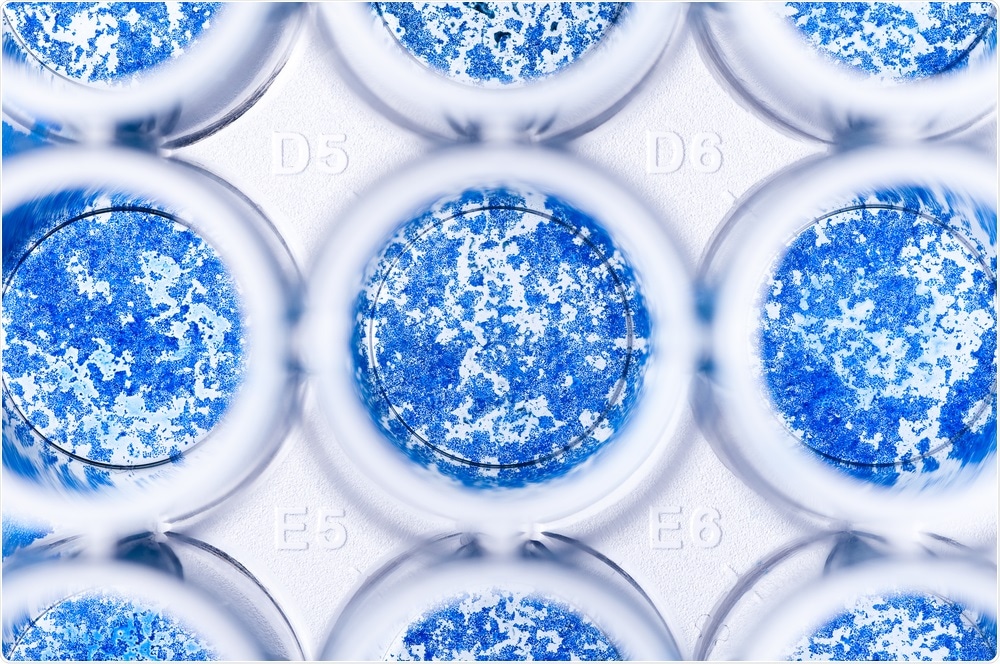An interview with Lindy O’Clair at the Society for Neuroscience Annual Conference in 2018, discussing the challenges that scientists face when analyzing neuronal systems over time, and how Sartorius are working to address these challenges through new technologies.
Why do scientists carry out continuous experiments with multiple time points, particularly in the field of neuroscience?
The brain is a complex system, whose function depends on the dynamic interplay between cells. In order to evaluate the actions and structures of these cells, it is critical for neuroscientists to monitor temporal changes to understand how the brain operates.
 Sebastian Kaulitzki | Shutterstock
Sebastian Kaulitzki | Shutterstock
Single endpoint measurements simply do not offer insight into the dynamic changes and interactions of cells of the nervous system. When working with complex systems, it is imperative to use repeated measurements to gain insights into both the significant and subtle changes that can occur.
What are the greatest challenges faced by scientists conducting continuous, long-term experiments, and how can these problems affect experimental results?
To put this in context, I’ll specifically focus on human induced pluripotent stem cell-derived neurons, which are at the forefront of research and offer great promise as in vitro cell models. In order to take advantage of these sensitive cell models, researchers need the ability to reliably sustain cultures and analyze the changes that occur as these cells mature and differentiate.
In doing so, researchers must be aware that any perturbance of the cells, from plate movement to changes in environmental control (e.g., temperature, humidity, and gas) can significantly affect the biological behavior of their cells, introducing experimental artifacts.
We must appreciate the money, time and effort that scientists are dedicating to evaluate complex disorders using iPSCs and must ensure that the information and insights that they are generating are not misleading due to artificially introduced data.
How does the IncuCyte S3 Live-Cell Analysis System help address these issues? What are the major benefits of this technology?
The IncuCyte system is designed to alleviate the concern of cell perturbance through uninterrupted incubation; provided by standard tissue culture incubators, and the ability to perform non-invasive measurements while experimental plates remain stationary.
The combination of both environmental control and a mobile optical train that reduces physical disturbance gives researchers the ability to reliably assess dynamic biology over time. Confidence in data is a key requirement when studying subtle changes in complex biology.
Adding the ability to detect these changes kinetically ensures that researchers are not only studying the biology of interest, but that they are also able to evaluate the full-time course that otherwise could have been overlooked with end-point reads.
IncuCyte® S3 Live-Cell Analysis System
Detecting changes over time is one thing, but what about the ability to detect fast kinetics, long-term? What types of assays does the IncuCyte address when it comes to this type of dynamic changes within cells?
We recently released a new application to detect neuronal activity which is able to capture calcium oscillations using a unique movie mode acquisition, allowing us to address the need to detect fast kinetics.
One of the most challenging problems faced by neuroscientists is understanding how neuronal networks develop over time, including being able to determine whether neuronal cells are active and how their activity changes over time.
Scientists needed a technology that could capture this longitudinally, and without perturbing the biology. It takes days, weeks or months for some stem cells models to mature and become active. With the IncuCyte® Neuronal Activity Assay, scientists are able to gain unprecedented access to complex, neuronal activity measurements, giving functional insight into cellular changes over time.
 akh_photo | Shutterstock
akh_photo | Shutterstock
How can the technology be used to study multiple cell types, including immune cells such as microglia?
The IncuCyte system has the unique ability to analyze multiple cell types and multiple applications. The system gives the ability to study neuronal activity, as I previously mentioned, but it also allows you to evaluate, for example, phagocytic cell clearance by microglia or the chemotactic movement of microglia in real-time.
Providing a multifunctional platform with built-in analysis allows researchers to monitor and measure multiple cell behaviors kinetically, significantly aiding the understanding of functional changes with confidence.
How can scientists make the most of this technology?
Scientists should take advantage of the fact that the IncuCyte offers multiple applications to study the progressive cellular changes. Such studies are necessary to characterize new models which ultimately provide important insights into human disease.
Combining multiple techniques on a single, reproducible platform which also minimizes cell perturbance truly facilitates a deeper understanding of relevant biological changes. Our goal is to provide researchers with tools and applications that can answer their scientific questions, but also allow them to use the instrument in innovative and new ways to deliver scientific discovery.
About Lindy O’Clair
 Lindy O’Clair studied Cellular & Molecular Biology at the University of Michigan in Ann Arbor, Michigan, USA. She has worked as a Scientist for Pfizer evaluating antiviral and antibacterial molecular targets for therapeutic intervention.
Lindy O’Clair studied Cellular & Molecular Biology at the University of Michigan in Ann Arbor, Michigan, USA. She has worked as a Scientist for Pfizer evaluating antiviral and antibacterial molecular targets for therapeutic intervention.
From there, she worked at Aastrom BioSciences, developing assays targeted at understanding human cell product characterization and function.
Lindy has spent the past 7 years working at Essen Bioscience, a Sartorius Group, developing and executing R&D applications and now as a Global Product Manager.
 Sartorius
Sartorius
Sartorius is a leading international pharmaceutical and laboratory equipment supplier. With our innovative products and services, we are helping our customers across the entire globe to implement their complex and quality-critical biomanufacturing and laboratory processes reliably and economically.
The Group companies are united under the roof of Sartorius AG, which is listed on the Frankfurt Stock Exchange and holds the majority stake in Sartorius Stedim Biotech S.A. Quoted on the Paris Stock Exchange, this subgroup is comprised mainly of the Bioprocess Solutions Division.
Innovative Technologies Enable Medical Progress
A growing number of medications are biopharmaceuticals. These are produced using living cells in complex, lengthy and expensive procedures. The Bioprocess Solutions Division provides the essential products and technologies to accomplish this.
In fact, Sartorius has been pioneering and setting the standards for single-use products that are currently used throughout all biopharmaceutical manufacturing processes.
Making Lab Life Easier
Lab work is complex and demanding: Despite repetitive analytical routines, lab staff must perform each step in a highly concentrated and careful way for accurate results.
The Lab Products and Services Division helps lab personnel excel because its products, such as laboratory balances, pipettes and lab consumables, minimize human error, simplify workflows and reduce physical workloads